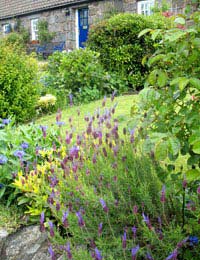
A well set up wildlife area can be a fantastic resource for any school, from it’s obvious ability to make a useful contribution to so much of the curriculum through to its simple – and often overlooked – value as a quiet place to just be. It’s a wonderfully adaptable idea, too, lending itself to almost any setting, urban or rural, large or small. From the smallest of wildlife corners through to something more like the size of a private nature reserve, no matter how much or how little space your school can spare, it can be put to good use – and there’s more than enough opportunity for pupil participation doing it, too.
Involve Everyone!
Arguably the single most important task is getting as many people involved as you possibly can – the pupils (and their parents), teachers, other staff, school governors, PTA, local wildlife trust, community organisations and so on. It’s a case of the more the merrier, and it helps in two main ways. Firstly, it lets you tap into a ready supply of ideas and know-how and secondly, and perhaps even more importantly, it encourages everyone to ‘own’ the project – and we all like to feel we’re a part of something. At best, everyone gets to see how much effort is involved in making it work, and at worst, nobody can whine later that they didn’t get their chance to air their views!
Once you’ve got everyone on board, you can really get started – and obviously the next step is to find the right site.
Site Selection
Picking the site can sometimes be a case of Hobson’s choice – it’s this spot or nowhere – but if you do have the chance to choose, a sunny or partially shady spot is ideal. It’s somewhere which can be organised to provide a range of habitats, some sun to warm up the largely cold-blooded population that will live there and give good growing conditions for the plants.
The site may currently be a completely bare corner, or come equipped with a range of features such as walls, fences or shrubs from earlier days and there’s no ‘best’ option between the two. Clean sites, for example, call for a bit more design input, but they’re a blank canvas which gives teacher and that willing gang of volunteers plenty of scope to create whatever they please. By contrast, sites that are already partly landscapes give you a bit of a head start with useful established features to incorporate, but they don’t offer quite so much freedom. The good news is that both can be made to work really well, and some of the best school wildlife areas have been created on bits of ground that looked distinctly unpromising at first.
What to Include
Some of the decisions about what to include will depend on the site, but as a general rule, the main must-haves are:
Water – a pond if possible, even a small one, will be a great addition, though the age/ability of the children may need to be taken into account. If a pond proves impossible, consider a small self-contained water feature or even just a bird-bath.Bird table – birds are the most visible, and possibly most popular, visitors to any wildlife area, and since many of the once common kinds are in decline, they can do with a bit of help particularly in the winter months.Sympathetic planting – whether you choose to go for only native species, or use typical garden varieties, remember that plants are the basis of the food chain, so pick ones that will attract insects and other bugs, which in turn bring in birds and other visitors to the area.Shelter – from the largest to the smallest, wild animals need somewhere to shelter. There’s an untold wealth of animal homes and shelters on sale, ranging from hedgehog homes to ladybird logs, so you won’t be lost for ideas. Alternatively, if your school has the facilities, the kids can make them themselves; there are loads of free plans available.
Help and Advice
It’s worth remembering that here are plenty of people to turn to for a little help and advice, if you feel the need, including the likes of your own school authorities, the council and your local wildlife trust. It’s worth getting in touch with these and other organisations to see what assistance they may have to offer; if you’re really lucky you might find that, despite these cash-strapped days, some of them may even offer a grant or two to help the project along.
From its planning right through to its ongoing maintenance, a school’s wildlife area is a great educational opportunity, from the maths and mapping of the initial design, to the biological possibilities of the finished thing – plus all the creative writing, craft-work and art in between. The bottom line is, they’re great fun and with a bit of careful planning, they’re not too difficult to set up.
Every school should have one!




Hi, we starting our eco garden at school and would like some tips on what we can do from now until autumn. Any info would be appreciated. Thank you. kind regards Carol
Autumn is a great time to get your eco garden into order. Clear up leaves throughout autumn – compost them for mulch to use in spring. Collect seeds from any suitable plants and dry them for us next year. Clean and treat any paths/woodwork/furniture to ensure it lasts through the harsher weather. Plant veggies like onions, shallots, spring onions, carrots garlic, broad beans, peas, asparagus and various types of salad leaf.